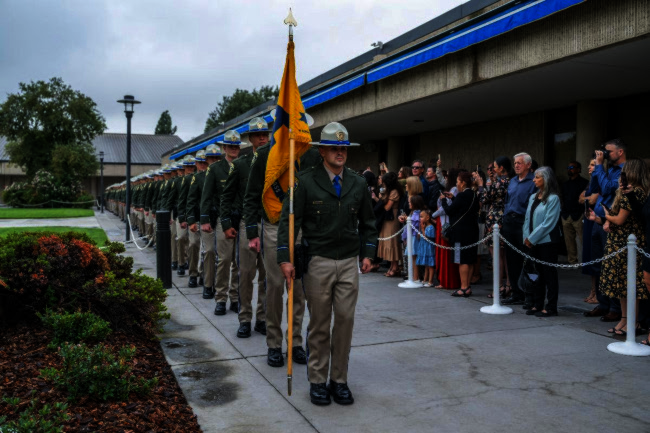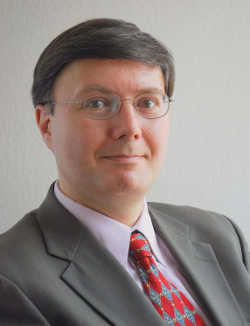
The Trump administration announced on Sept. 20, 2025, that it plans to stop releasing food insecurity data. The federal government has tracked and analyzed this data for the past three decades, but it plans to stop after publishing statistics pertaining to 2024 data. The Conversation U.S. asked Tracy Roof, a political scientist who has researched the history of government nutrition programs, to explain the significance of the U.S. Household Food Security Survey and what might happen if the government discontinues it.
What’s food insecurity?
The U.S. Department of Agriculture defines food security as “access by all people at all times to enough food for an active, healthy life.”
People who are food insecure are unsure they can get enough food or unable to get enough food to meet these basic needs because they can’t afford it.
How does the government measure it?
The USDA has collected data on food insecurity since the mid-1990s. It includes the share of the population that is food insecure and a subset of this group considered to have very low food security.
People who are food insecure may not significantly reduce how much they eat, but they are likely to eat less balanced meals or lower-quality food. People with very low food security report eating less altogether, such as by skipping meals or eating smaller meals.
These statistics are based on answers to questions the USDA adds to the Current Population Survey, which the Census Bureau administers every December. There are 10 questions in the survey. Households with children are asked four more.
The questions inquire about access to food, such as whether someone has worried in the past year that their food would run out before they had enough money to buy more, or how frequently they have skipped meals, could not afford balanced meals, or felt hunger.
The U.S. food insecurity rate stood at 13.5% in 2023, the most recent year for which data is currently available. The final annual food security report, expected in October, will be issued for 2024 – based on data collected during the Biden administration’s last year.
Why did the government start measuring it?
Calls for creating the food stamp program in the 1960s led to an intense debate in Washington about the extent of malnutrition in the U.S. Until then, the government did not consistently collect reliable or national statistics on the prevalence of malnutrition.
Those concerns reached critical mass when the Citizens’ Board of Inquiry into Hunger and Malnutrition, launched by a group of anti-hunger activists, issued a report in 1968, Hunger USA. It estimated that 10 million Americans were malnourished.
That report highlighted widespread incidence of anemia and protein deficiency in children. That same year, a CBS documentary, “Hunger in America,” shocked Americans with disturbing images of malnourished children. The attention to hunger resulted in a significant expansion of the food stamp program, but it did not lead to better government data collection.
The expansion of government food assistance all but eliminated the problem of malnutrition. In 1977, the Field Foundation sent teams of doctors into poverty stricken areas to assess the nutritional status of residents. Although there were still many people facing economic hardship, the doctors found there was little evidence of the nutritional deficiencies they had seen a decade earlier.
Policymakers struggled to reach a consensus on the definition of hunger. But the debate gradually shifted from how to measure malnutrition to how to estimate how many Americans lacked sufficient access to food.
Calls for what would later be known as food insecurity data grew after the Reagan administration scaled back the food stamps program in the early 1980s. Despite the unemployment rate soaring to nearly 11% in 1982 and a steep increase in the poverty rate, the number of people on food stamps had remained relatively flat.
Although the Reagan administration denied that there was a serious hunger problem, news reports were filled with stories of families struggling to afford food.
Many were families of unemployed breadwinners who had never needed the government’s help before. During this period, the number of food banks grew substantially, and they reported soaring demand for free food.
Because there was still no government data available to resolve the dispute, the Reagan administration responded to political pressure by creating a task force on hunger in 1983. It called for improved measures of the nutritional status of Americans.
The task force also pointed to the difference between “hunger as medically defined” and “hunger as commonly defined.” That is, someone can experience hunger – not getting enough to eat – without displaying the physical signs of malnutrition. In other words, it would make more sense to measure access to food as opposed to the effects of malnutrition.
In 1990 Congress passed the National Nutrition Monitoring and Related Research Act, which President George H.W. Bush signed into law. It required the secretaries of Agriculture and Health and Human Services to develop a 10-year plan to assess the dietary and nutritional status of Americans. This plan, in turn, recommended developing a standardized measurement of food insecurity.
The Food Security Survey, developed in consultation with a team of experts, was first administered in 1995. Rather than focusing on nutritional status, it was designed to pick up on behaviors that suggested people were not getting enough to eat.
Did tracking food insecurity help policymakers?
Tracking food insecurity allowed the USDA, Congress, researchers and anti-hunger groups to know how nutritional assistance programs were performing and what types of households continued to experience need. Researchers also used the data to look at the causes and consequences of food insecurity.
Food banks relied on the data to understand who was most likely to need their help.
The data also allowed policymakers to see the big jump in need during the Great Recession starting in 2008. It also showed a slight decline in food insecurity with the rise in government assistance early in the COVID-19 pandemic, followed by another big jump with steeply rising food prices in 2022.
The big budget bill Congress passed in July will cut spending on the Supplemental Nutrition Assistance Program by an estimated US$186 million through 2034, an almost 20% reduction.
Supporters of SNAP, the new name for the food stamp program adopted in 2008, worry the loss of the annual reports will hide the full impact of these cuts.
Why is the administration doing this?
In the brief press release the USDA issued on Sept. 20 announcing the termination of the annual food insecurity reports, the USDA indicated that the Trump administration considers the food security survey to be “redundant, costly, politicized, and extraneous,” and does “nothing more than fear monger.”
While I disagree with that characterization, it is true that anti-hunger advocates have pointed to increases in food insecurity to call for more government help.
Is comparable data available from other sources?
Although the USDA noted there are “more timely and accurate data sets” available, it was not clear which datasets it was referring to. Democrats have called on the Trump administration to identify the data.
Feeding America, the largest national network of food banks, releases an annual food insecurity report called the Map the Meal Gap. But like other nonprofits and academic researchers that track these trends, it relies on the government’s food insecurity data.
There is other government data on food purchases and nutritional status, and a host of other surveys that use USDA questions. However, there is no other survey that comprehensively measures the number of Americans who struggle to get enough to eat.
As in the 1980s, policymakers and the public may have to turn to food banks’ reports of increased demand to get a sense of whether the need for help is rising or falling. But those reports can’t replace the USDA’s Food Security Survey.![]()
Tracy Roof, Associate Professor of Political Science, University of Richmond
This article is republished from The Conversation under a Creative Commons license. Read the original article.

 How to resolve AdBlock issue?
How to resolve AdBlock issue? 













